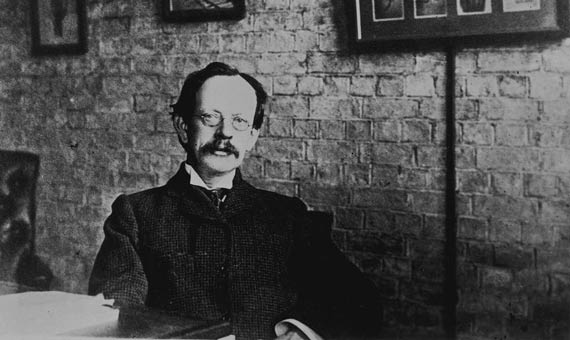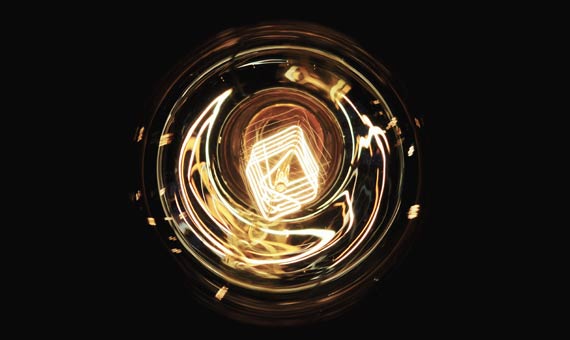Every April 30 we celebrate the anniversary of the discovery of the first subatomic particle: the electron, an achievement that the encyclopaedias attribute to the English physicist Joseph John Thomson in 1897. He was a well-known scientist in his day, but his announcement was hard to believe as it was thought at the time that there was nothing smaller than an atom. But within a short time that discovery revolutionized the scientific understanding of matter, opening the way to particle physics and also to a multitude of applications in the field of electronics—according to the textbooks. But was it really so?

“The word ‘discover’ is problematic,” Jaume Navarro, author of the book A History of the Electron. J.J. And G.P Thomson (Cambridge University Press, 2012), suggests to OpenMind. The truth is that the discovery of the electron could be considered an early case of collective science, advancing from diverse approaches and at the hands of different researchers who, according to Navarro, “had different problems in mind.”
The history of the electron and its alleged discoverer are actually two separate lines that ended up meeting. To reconstruct the story, perhaps it is not necessary to go back so far as ancient Greece, where the word “elektron” referred to amber, capable of attracting small objects when rubbed. But we should at least return to the idea of an electric fluid, originating in the eighteenth century and whose excess or defect Benjamin Franklin related to the ideas of positive or negative charge.
The atom was not indivisible
By the mid-nineteenth century, Richard Laming was already suggesting that the atom was not really indivisible, but was composed of a core of matter surrounded by units of electric charge. At the same time, Michael Faraday coined the terms “ion”, “cation” and “anion” to designate the types of chemicals with electric charge that in a battery travelled from one electrode to another through a liquid medium: the cations towards the cathode and the anions towards the anode. It was the Irishman George Johnstone Stoney who in 1874 proposed that there were elemental units of electricity in the atom, for which he invented the word “electron” in 1891.
Meanwhile, several scientists were experimenting with so-called Crookes tubes: glass vessels emptied of air in which an electric discharge produced fluorescence. In 1876, the German physicist Eugen Goldstein gave the name “cathode rays” to this mysterious energy emitted by the cathode of those tubes. And the English chemist William Crookes discovered that the rays could be bent with electric and magnetic fields, indicating that they had a negative electric charge.

Thus, in the last quarter of the nineteenth century, notions about subatomic particles and the unit of charge were already circulating, and some physicists had come to the idea that cathode rays were composed of something electrically charged. It would seem that the particle on which to bestow the name invented by Stoney was a ripe fruit about to fall. And the man who picked it was J. J. Thomson (18 December 1856 – 30 August 1940), a brilliant mathematician who directed the prestigious Cavendish Laboratory of the University of Cambridge and who experimented with the conduction of electricity through gases, after having developed models on the electromagnetic theory of James Clerk Maxwell.
The discovery of the “corpuscles”
On April 30, 1897, Thomson read a speech to the Royal Institution in which he communicated his experimental results demonstrating the corpuscular nature of cathode rays. Thomson’s work revealed that the rays emitted by a cathode (or negative electrode) were composed of negatively charged particles, which the physicist called “corpuscles”. Their calculated mass was on the order of 1000 times less than that of the smallest unit of charge then known, the ionized hydrogen atom (H+).
Thomson had found the first subatomic particle, though in reality he was not looking for that, but rather a unit of electric charge. According to Jaume Navarro, what the physicist was pursuing was “an understanding of the mechanisms of interaction between matter and electricity.” For all this, says Navarro, “the figure of Thomson does not fundamentally represent the father of the electron, but rather the advance of Maxwell’s theories and his role in the physics of the turn of the century.” In a way, the electron was a rarity, an “anomaly in its trajectory,” as the historian put it. In fact, J. J. Thomson received the Nobel Prize in 1906 for his main line of work, his research on the conduction of electricity in gas-filled tubes.
Neither could it be said that Thomson’s findings marked the year zero of the great technological revolution of the twentieth century: electronics. His work enhanced the understanding of fundamental electronics, but if a moment had to be chosen for the beginning of the era of the electronics, for Navarro it would be the invention of the diode in 1904 by the American Lee de Forest—not a physicist, but an inventor “far from the tradition of theoretical or university physics.”
Perhaps our current electronic devices owe more to Edison or Marconi than Thomson, but science owes much to the British physicist. Another eight Nobel laureates, such as Ernest Rutherford, came from Thomson’s Cavendish laboratory, and one more from his own house: his son George Paget Thomson, was awarded a Nobel in 1937 for proving that his father’s electron particle was also a wave.
Javier Yanes for Ventana al Conocimiento
Comments on this publication